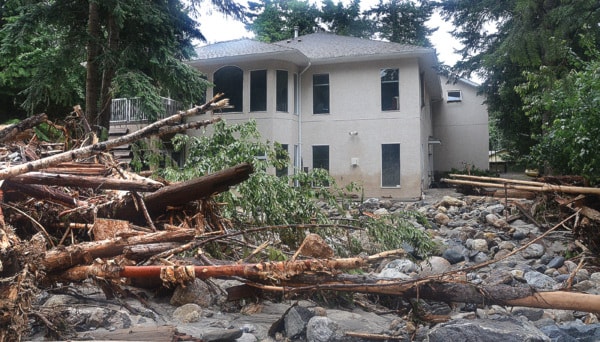A letter from Minister of Justice Shirley Bond to the Columbia Shuswap Regional District board sparked discussion about government responsibility in the event of flooding.
In her March 27 letter, Bond noted the importance of “an integrated response” when flooding occurs.
Bond cited last year’s flood events that challenged numerous B.C. communities and strained the resources of many agencies tasked with response and recovery.
While she acknowledged the challenges facing regional districts and small municipalities, Bond was not buying into a CSRD claim that the regional district is not responsible for flood management.
“As you know, these challenges have led some local governments to signal that their staff will no longer conduct or participate in flood response activities,” she wrote, claiming the action would leave a critical gap in emergency management services, as the province has neither the structure or capacity to undertake local flood response. “Local authority responsibility for emergency management, including the hazard of flooding, is clearly established in the Emergency Program Act (Section 6),” she wrote. “It is not appropriate or practical for local authorities to step back from their responsibility to manage this hazard.”
But in briefing notes he provided for CSRD directors, Gary Holte, manager of environment and engineering services, disputed Bond’s claim, noting that according to the regional district’s solicitor, CSRD met its obligation under Section 6 (1) and 6 (2) of the act following debris and flooding events at Swansea Point and Two Mile last summer.
“It is not CSRD’s mandate to provide emergency response service for flooding events as it has not established a flood protection service function nor a tax for flood protection,” Holte wrote. “In addition, the CSRD does not have the resources, staff, equipment or expertise necessary to provide site response to flooding events.”
Holte reminded directors that in 2010, following attempts by the province to “download flood response responsibility, the board approved a policy that clarifies CSRD’s position.
But Sicamous Mayor Darrell Trouton asked for clarity.
“In the briefing notes, it’s stated that CSRD doesn’t do flood response, but we should look a bit closer into what CSRD’s involvement is,” he said, recalling emergency management meetings last summer. “There was no discussion in Sicamous that CSRD wasn’t part of it. Cliff (CSRD emergency co-ordinator Cliff Doherty) never said anything. We need more clarity around who is responsible.”
In terms of responsibility, CSRD chief executive officer Charles Hamilton said there had been a meeting with Union of British Columbia Municipalities (UBCM) officials concerning jurisdiction.
“We even sought the advice of a lawyer to identify and notify the province and the board passed a resolution (in January) with the North Okanagan Regional District that will go forward jointly at SILGA,” he said.
Hamilton noted that if the resolution is endorsed at the Southern Interior Local Government Association’s early May meeting in Salmon Arm, it will go forward to UBCM.
Hamilton deemed Bond’s letter curious because, on the one hand, she says she has asked provincial emergency management officials to find new ways to support local authorities, but “it still perpetuates this myth that we have a much larger role.”
As to keeping the board updated, Hamilton suggested Bond’s letter and Holte’s backgrounder be sent to all regional district municipalities, a motion that was then put forward by Area E Rural Sicamous director Rhona Martin.
Martin also suggested that immediately following the next municipal election, CSRD hold a workshop to advise on regional district and board responsibilities.
